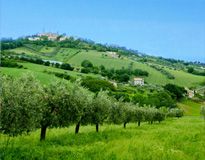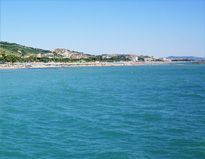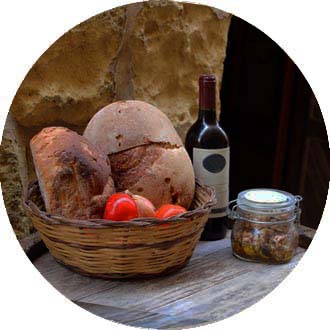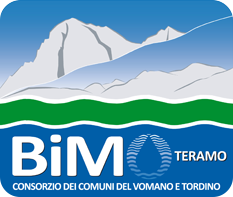Listed among the most beautiful villages in Italy, Pietracamela is a beautiful mountain village perched on the slopes of Corno Piccolo and surrounded by extensive and lush forests, the only municipality in the province to be entirely included in the Gran Sasso-Monti della Laga Park area.
Unlike other Teramo mountain villages, it has very few hamlets, Intermesoli and Prati di Tivo, with the latter which for years has been a point of reference for winter tourism (and not only) of the entire province but also beyond location close to 1500 m above sea level.
The town is well maintained and is characterized by the presence of many houses dating back to the fifteenth and sixteenth centuries, almost all of stone crossed by narrow streets, alleys and stairways very suggestive. Around the village from time to time emerge the remains of the defensive walls of the sixteenth century including a turreted structure at the entrance of the City, near the Church of San Leucio, still in good condition and used as a dwelling.
Near the Church, the Torre House, formerly used as a watchtower. Also worth a visit are the church of San Giovanni (1432), the church of San Rocco, built in 1530 on the occasion of the plague that fell on the citizenship, the house of "Li Signuritte" with mullioned windows of the fifteenth century and a crucifix in majolica. Pietracamela, together with the nearby Cerqueto di Fano Adriano, was in ancient times the "homeland" of the wool carders, a profession that has completely disappeared.
From the historical point of view it is interesting to note how over the centuries the municipality has assumed different names: ranging from Pietra Cimmeria from the Augustan period to the simple fourteenth century Petra up to the different names of Petracameri, Petra Camerii, Petra Camelis or Camelii, but also Castri Camelorum and oppose Prete Camelorum. From the eighteenth century it is referred to as Pietra Camela.
The origin of the village is not certain: some hypotheses date back to its foundation to people from Abruzzo around the twelfth century considering these places less exposed to enemy raids, while others identify in some groups of pastors or carders of Puglia wool the first inhabitants of village. However, the first documented quotations of the existence of the country date back to 1324, when it was mentioned concerning the tithe that the church of "San Leutii de Petra in the Sicilian Valley" had to pay to pay for the annuity of the 7th call.
From 1526 to 1806, the historical events of the village are inextricably linked to the Sicilian Valley, an area that included territories, towns and districts between the Vomano and Mavone rivers. In fact, in 1526 this valley was donated by Charles V of Hapsburg to Don Ferdinando (or Ferrante) Alarçon y Mendoza, a Spanish condottiere famous for having distinguished himself in the siege of Pavia of the previous year.
The Mendoza, therefore, was appointed Marquis of the Sicilian Valley and assignee also of the barony of Petra Camerii and his descendants will retain possession of the village until the subversion of feudality (implemented with some laws passed between 1806 and 1808).
During the French occupation, Matteo Manodoro, insurgent of the place and defender of the rights of King Ferdinando IV of Naples, in 1779 led an uprising against the French troops of Napoleon III, breaking down the trees of liberty and supplanting them with the crosses. Manodoro managed to beat the French several times, representing a real thorn in the side, until they reached Pietracamela, destroyed his house and plundered the village.
In 1806 the long season of the governed Sicilian Valley ended and the territory was divided into the two districts of Teramo and Penne, both under French domination. In 1860, with the end of the Kingdom of Naples, the country was united to the Kingdom of Italy.
The typical cuisine of Pietracamela is fully integrated into the culinary tradition of Teramo mountain and in it a prominent role is covered by the goat stew, but it should also be noted a special dessert called U mstrariegl (monster, monster), shaped like a man of horns. The uglier it is, the more precious it is and takes on value.
- Intermesoli
- Pietracamela
- Prati di Tivo
By Car
- From L'Aquila-Rome, A24. Exit at the Colledara / San Gabriele / Prati di Tivo exit, continue towards Montorio al Vomano and follow the S.S. 80 to the junction for Pietracamela and Prati di Tivo. After about 10 kilometers you get to Pietracamela.
- Take the A14 Adriatica motorway (Ancona-Pescara). Exit at Teramo / Giulianova / Mosciano Sant'Angelo, continue for Teramo and then for Montorio al Vomano, follow S.S. 80 to the junction for Pietracamela and Prati di Tivo and then reach the village after about 10 kilometers.
 en
en 


















